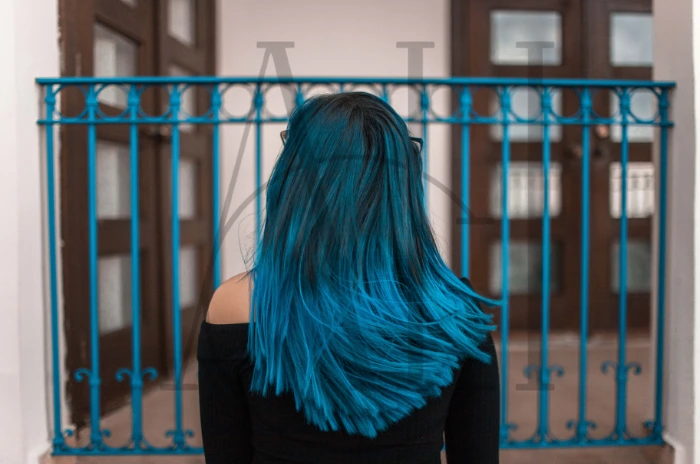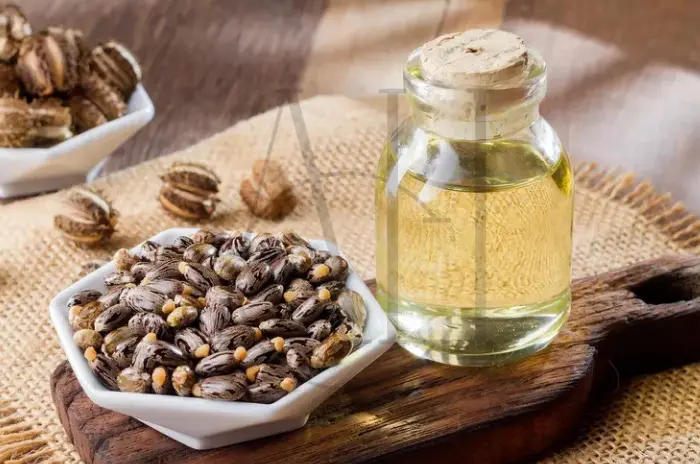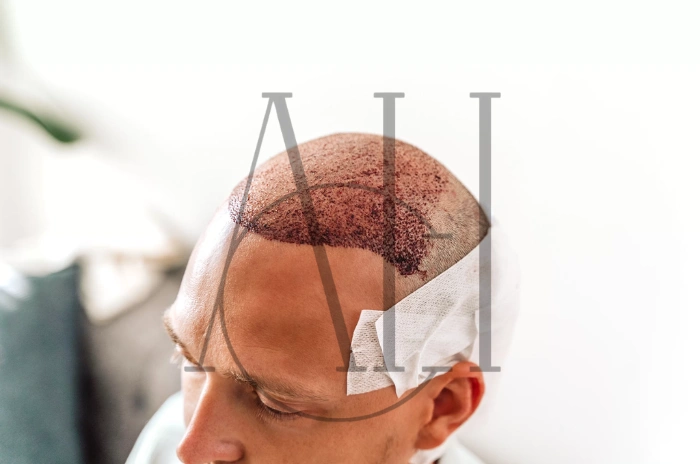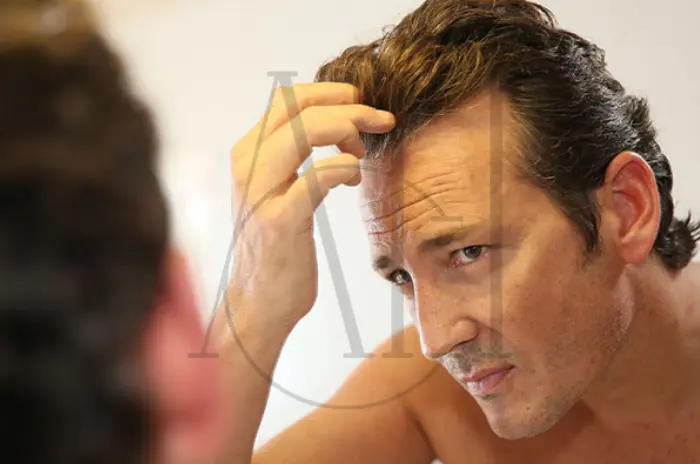Transforming your look with blue hair color has become one of the most sought-after trends in modern hair styling. Whether you’re dreaming of electric cobalt, soft pastel blue, or deep navy tones, achieving and maintaining vibrant blue hair requires proper technique, patience, and the right products. This comprehensive guide will walk you through everything you need to know about dyeing your hair blue, from initial preparation to long-term maintenance, ensuring you get the stunning results you’re after.
Table of Contents
ToggleHow to Dye Your Hair Blue – Complete Guide
Successfully achieving blue hair color requires careful planning and execution. The process involves multiple steps that must be followed precisely to ensure vibrant, long-lasting results without excessive damage to your hair.
Choosing the right blue shade for your skin tone
- Selecting the perfect blue hair color starts with understanding your skin’s undertones and how different shades will complement your complexion
- Cool-toned individuals typically look stunning in bright electric blues, while warm-toned people often prefer deeper navy or teal variations
- Consider your lifestyle and maintenance commitment when choosing between pastel blue hair and more intense, saturated shades
Understanding bleach requirements for your base color
- Dark hair and black hair require multiple bleaching sessions to achieve the pale base necessary for vibrant blue results
- Medium brown hair typically needs one to two bleaching rounds, while lighter hair may only need minimal lightening
- The goal is to reach a level 9-10 blonde base, which appears almost white and provides the perfect canvas for blue hair dye
Gathering all necessary tools and products
- Essential items include sulfate-free shampoo, color-safe conditioner, sectioning clips, gloves, and a tint brush for precise application
- Invest in high-quality blue hair dye from reputable brands like Schwarzkopf or professional salon products
- Prepare your workspace with old towels, plastic wrap, and protective clothing to prevent unwanted staining
Why Try Temporary Blue Hair Dye
Temporary blue hair dye offers an excellent way to experiment with bold colors without long-term commitment. These products typically last 4-12 washes, making them perfect for special events, festivals, or testing whether blue suits your style. Semi-permanent options provide a middle ground, lasting 6-8 weeks while gradually fading. Temporary blue dye also causes significantly less damage than permanent formulations, making it ideal for maintaining hair health while exploring creative looks.
Why Dyeing Your Hair Blue Takes Time
The process of achieving perfect blue hair color is time-intensive and requires patience. Professional colorists emphasize that rushing through any step can result in uneven color, excessive damage, or disappointing results.
Expect Salon Visits of Over 6 Hours
- Professional blue dye appointments often require 6-8 hours, especially when starting with dark hair that needs extensive bleaching
- Multiple bleaching sessions may be scheduled across several appointments to minimize damage and achieve optimal lightness
- The actual blue hair dye application and processing time adds another 1-2 hours to the overall appointment
Bring Snacks and Plan Around It
- Long salon sessions require preparation with entertainment, snacks, and comfortable clothing for extended sitting
- Schedule your appointment on a day when you can rest afterward, as the chemical processing can be taxing
- Consider bringing a friend for company or plan to catch up on reading or streaming during processing time
How to Minimize Damage After Bleaching
Bleaching is essential for vibrant blue hair color but can compromise hair health. Implementing a comprehensive damage control routine protects your hair while maintaining color vibrancy.
Use Deep Conditioning Masks Weekly
- Weekly hair masks with protein and moisture help rebuild damaged hair cuticles and prevent dryness and breakage
- Look for masks specifically formulated for chemically treated hair that won’t strip your blue hair color
- Apply masks from mid-length to ends, avoiding the scalp area to prevent buildup
Schedule Professional Conditioning Treatments
- Professional hair care treatments like Olaplex or K18 can significantly improve hair strength and elasticity
- These treatments work at a molecular level to rebuild broken bonds caused by bleaching chemicals
- Schedule treatments every 4-6 weeks or as recommended by your colorist
Get Regular Trims
- Trimming every 6-8 weeks removes damaged ends and prevents splitting from traveling up the hair shaft
- Regular maintenance cuts keep your blue hair color looking fresh and healthy
- Communicate with your stylist about your color maintenance schedule to coordinate services effectively
Bleaching Process for Blue Hair
The bleaching stage is crucial for achieving vibrant blue hair color trends. This process removes natural pigment, creating the light base necessary for true-to-tone blue results.
When and how to bleach dark hair
- Blue hair on bleached hair requires achieving level 9-10 lightness, which may take multiple sessions for dark hair types
- Professional bleaching products work more effectively and safely than box kits, reducing the risk of severe damage
- The process should be gradual, with at least one week between bleaching sessions to allow hair recovery
Achieving the perfect pale base
- The ideal base for vibrant blue dye appears almost white with minimal yellow undertones
- Toner application may be necessary to neutralize any remaining brassiness before applying blue color
- Purple or blue-based toners work best to create the neutral canvas needed for true blue results
Bleach aftercare before coloring
- Wait at least 48-72 hours between bleaching and applying blue hair dye to allow the hair cuticle to settle
- Use protein treatments and deep conditioning masks to strengthen hair before color application
- Avoid heat styling and harsh products during the recovery period between bleaching and coloring
Selecting the Right Blue Shade
Choosing the perfect blue hair color depends on personal preferences, skin tone, and maintenance commitment. Understanding different blue formulations helps ensure satisfaction with your final results.
Bright or Metallic Blue Options
- Electric and cobalt blues create striking, attention-grabbing looks that work well with cool skin tones
- Metallic blue shades contain shimmer particles that add dimension and catch light beautifully
- These intense shades typically require more maintenance but provide the most dramatic color transformation
Mix Blue with Other Colors
- Blue ombre hair combines blue with natural colors for a more gradual, subtle transition
- Oil slick hair incorporates multiple colors including blue, purple, and green for an iridescent effect
- Blue hair streaks offer a less commitment-heavy way to incorporate blue into your overall look
Rinsing and Aftercare
Proper rinsing technique and immediate aftercare significantly impact the longevity and vibrancy of your blue hair color. These first steps set the foundation for long-term color maintenance.
The right way to rinse out blue dye
- Rinse with cool water to seal the hair cuticle and lock in color molecules
- Continue rinsing until water runs completely clear, which may take 10-15 minutes with intense blues
- Avoid hot water during the first 48 hours, as heat opens the cuticle and allows color to escape
First wash tips to prevent fading
- Wait at least 48-72 hours before the first shampoo to allow color molecules to fully set
- Use sulfate-free shampoo blue hair specific products that won’t strip color during the crucial first wash
- Apply color-safe conditioner from mid-length to ends, avoiding the scalp area
Recommended post-color products
- Invest in blue hair aftercare products specifically formulated for maintaining fashion colors
- UV protection blue hair products help prevent sun fade blue hair and maintain vibrancy longer
- Color-depositing conditioners can refresh color between salon visits and extend time between touch-ups
Blue Hair Fades Fast
Understanding the fading process helps set realistic expectations and plan for proper maintaining blue hair color. Blue pigment molecules are larger and less stable than natural hair colors, leading to faster fading.
Blue Turns Teal Then Pastel Green
- Blue hair color typically fades through predictable stages: vibrant blue to teal to pastel blue hair to greenish tones
- This color shift occurs as blue pigment molecules break down and yellow undertones become visible
- Planning for this progression helps you decide when to refresh color or embrace the changing tones
Touch‑Ups Are Needed Every 2 Months
- Blue hair touch-up appointments are typically needed every 6-8 weeks to maintain vibrancy
- Professional blue dye touch-ups focus on refreshing faded areas and maintaining color consistency
- Home maintenance with color-depositing products can extend time between professional services
Match Shampoo and Conditioner
- Sulfate-free shampoo blue hair products prevent premature color stripping and maintain vibrancy
- Color-safe conditioner formulations protect color while providing necessary moisture and detangling
- Best blue hair products often come in matched sets designed to work synergistically for optimal results
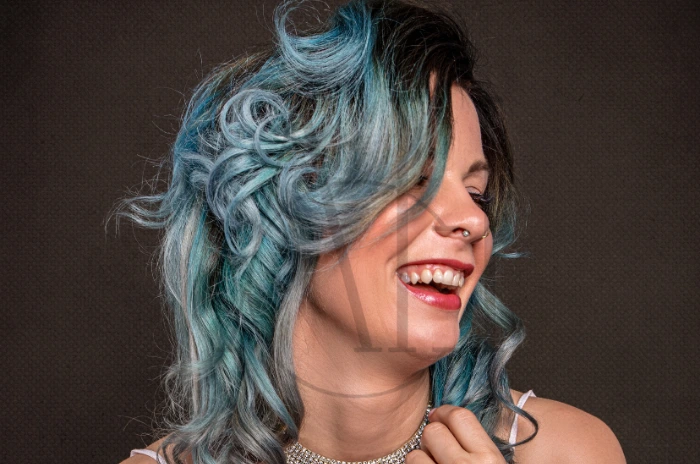
Things That Make Fade Faster
Environmental factors and product choices significantly impact blue hair color longevity. Understanding these influences helps you make informed decisions about your hair care routine.
Avoid Chlorine, Salt Water, and Sun
- Swimming pools contain chlorine that strips color and can cause unwanted green tones in blue hair
- Salt water from ocean swimming acts as a natural clarifying agent, accelerating color fade
- Sun fade blue hair occurs when UV rays break down color molecules, leading to uneven fading patterns
Stay Away from Alcohol Products and UV
- Alcohol shampoo damage includes severe color stripping and increased dryness and breakage
- Hair products containing high alcohol concentrations should be avoided completely with colored hair
- UV protection blue hair products are essential for maintaining color when spending time outdoors
Skip Clarifying Shampoos on Dyed Hair
- Clarifying shampoos are designed to remove buildup but will also strip blue hair color aggressively
- These products should only be used before color application, never for maintenance washing
- If buildup becomes an issue, consult your colorist for appropriate professional hair care solutions
Maintaining Your Blue Hue
Long-term maintaining blue hair color requires consistent care and appropriate product selection. Developing a proper routine protects your investment and extends color vibrancy.
Washing frequency advice
- Wash blue hair only 2-3 times per week maximum to prevent premature color fading
- Use dry shampoo between washes to absorb oil and maintain fresh-looking hair
- When washing, focus shampoo on the scalp area and let suds cleanse the lengths during rinsing
Color-protecting products
- Best blue hair products include sulfate-free shampoos, color-safe conditioners, and UV protection sprays
- Color-depositing treatments can refresh faded blue hair color between professional appointments
- Leave-in treatments with UV protection blue hair formulations provide ongoing color defense
UV protection needs
- Daily UV protection blue hair products should become part of your regular styling routine
- Wear hats or scarves when spending extended time in direct sunlight
- Consider temporary protective styles during beach vacations or outdoor festivals
Fixing Common Blue Hair Problems
Even with careful maintenance, blue hair color can develop issues that require correction. Understanding common problems and solutions helps maintain optimal color appearance.
Dealing with uneven color
- Uneven blue hair color often results from inconsistent bleaching or application technique
- Professional hair care correction may involve additional bleaching or color adjustment
- Home correction attempts can worsen the problem, making professional consultation essential
Preventing blue from turning green
- Green tones develop when blue fades and yellow undertones become visible
- Regular use of purple-toned products can neutralize yellow and prevent green shift
- Blue hair touch-up appointments should address this issue before green tones become prominent
Quick fixes for faded color
- Color-depositing conditioners provide temporary vibrancy boosts between professional services
- Blue hair dye tips include using semi-permanent color glosses for quick refreshes
- Avoid over-processing faded hair, which can lead to increased damage and poor color uptake
Why a Professional Salon Is Best
While blue hair at home attempts are possible, professional application offers significant advantages in results, safety, and longevity.
Pros Know How to Avoid Mistakes
- Professional blue dye application ensures even color distribution and proper processing times
- Experienced colorists can assess hair condition and adjust formulations accordingly
- Salon dye cleanup is handled professionally, eliminating staining concerns in your personal space
You’ll Get Cleaner Results With Less Mess
- Professional application techniques result in more precise color placement and cleaner lines
- Prevent dye transfer and staining issues that commonly occur with home applications
- Access to professional-grade products that aren’t available for consumer purchase
Should You Dye Your Hair at Home or in a Salon?
The decision between blue hair at home and professional application depends on experience level, desired results, and budget considerations.
Weighing DIY vs Professional Results
- Blue hair at home can work for those with previous coloring experience and realistic expectations
- Complex techniques like blue ombre hair or blue hair streaks require professional skill
- Consider the cost of potential corrections when evaluating the true expense of DIY attempts
Choosing the Right Blue Shade
Selecting the perfect blue hair color involves considering multiple factors including skin tone, maintenance commitment, and personal style preferences.
Pastel vs. neon vs. dark navy options
- Pastel blue hair requires the lightest base and frequent maintenance but offers a soft, ethereal look
- Neon blues create bold, attention-grabbing results that work well for dramatic style changes
- Dark navy options work on less-bleached hair and provide sophisticated, wearable color
How undertones affect final color
- Skin undertones significantly impact how blue hair color appears and complements your overall look
- Cool undertones pair beautifully with bright, true blues, while warm undertones suit blue-greens better
- Neutral undertones offer the most flexibility in blue hair color trends selection
Best blue dyes for different base colors
- Blue hair for dark hair requires extensive bleaching but can achieve the most dramatic transformations
- Medium base colors offer good blue uptake with moderate bleaching requirements
- Light base colors require minimal processing but may need toning for optimal blue results
The Dyeing Process – What Actually Happens
Understanding the actual apply blue dye process helps set realistic expectations and ensures proper preparation for your color appointment.
How long the dye needs to process
- Wait time blue dye typically ranges from 30-60 minutes depending on desired intensity and hair porosity
- Processing time varies based on hair condition, previous chemical treatments, and chosen blue shade
- Massage dye application ensures even distribution and optimal color penetration
Dealing with unexpected color results
- Color results may differ from expectations due to underlying pigments or hair condition variations
- Professional colorists can adjust formulations during processing to achieve desired outcomes
- Blue hair dye tips include testing on a small section first to preview results
Staining problems (skin, towels, pillows)
- Prevent pillow stains by using old pillowcases or protective covers for the first few nights
- Petroleum jelly applied around the hairline helps prevent dye transfer to skin during application
- Expect stains on fabric and skin and prepare accordingly with protective measures
Long-Term Maintenance Truths
Realistic expectations about maintaining blue hair color help ensure satisfaction with your color choice and proper care planning.
How often you’ll need to redye
- Blue hair touch-up appointments are typically needed every 6-8 weeks for maintained vibrancy
- Root touch-ups may be needed more frequently depending on natural hair growth rate
- Full color refresh is usually required every 3-4 months for optimal results
Dealing with roots and regrowth
- Root regrowth becomes visible within 2-4 weeks depending on natural hair color contrast
- Section hair dye techniques can target specific areas for more economical maintenance
- Planning root touch-ups with overall color refresh maximizes salon visit efficiency
Preventing blue from turning green
- Consistent use of purple-toned products neutralizes yellow undertones that cause green shift
- Blue hair maintenance includes regular deep conditioning to maintain hair health and color uptake
- Professional toning services can correct unwanted color shifts before they become pronounced
How Long Does Blue Hair Last?
Blue hair color longevity depends on multiple factors including hair condition, maintenance routine, and environmental exposure.
Expect 4–8 Weeks of Vibrant Color
- Vibrant blue dye typically maintains peak intensity for 4-6 weeks with proper care
- Gradual fading begins immediately but becomes noticeable around week 3-4
- Pastel blue hair results emerge naturally as the color fades, offering a different aesthetic
Use Touch-Up Kits or Color-Depositing Products
- Blue hair touch-up products can extend color life and refresh faded areas between salon visits
- Color-depositing conditioners provide gentle color renewal without additional chemical processing
- Professional gloss treatments offer mid-point color refreshing services
Pastel or Bold Results, Depending on Formula
- Semi-permanent formulas fade to softer, pastel blue hair tones over time
- Permanent formulations maintain intensity longer but require more extensive removal processes
- Formula choice impacts both initial results and long-term maintenance requirements
Best Products for Blue Hair
Selecting appropriate best blue hair products significantly impacts color longevity and hair health throughout the maintenance process.
| Product Type | Recommended Features | Best For | Frequency of Use |
|---|---|---|---|
| Sulfate-Free Shampoo | Color-safe, gentle cleansing, UV protection | Daily cleansing without color stripping | 2-3 times per week |
| Color-Safe Conditioner | Moisturizing, pH-balanced, blue pigments | Maintaining hydration and color vibrancy | Every wash |
| Weekly Hair Mask | Deep conditioning, protein treatment | Repairing bleach damage and preventing breakage | Once weekly |
| Color-Depositing Conditioner | Blue pigments, temporary color refresh | Extending time between salon visits | 1-2 times per week |
| UV Protection Spray | Heat protection, sun defense, color shield | Daily styling and outdoor protection | Daily before styling |
| Leave-In Treatment | Moisture sealing, frizz control, color lock | Ongoing hair health and color protection | Daily on damp hair |
Color-safe shampoos that work
- Sulfate-free shampoo blue hair specific formulations prevent premature color stripping
- Look for products specifically labeled for fashion colors or fantasy shades
- Professional hair care brands often offer superior color protection compared to drugstore alternatives
DIY color-refreshing treatments
- Color-depositing conditioners provide gentle color renewal between professional appointments
- Semi-permanent color glosses can refresh faded blue hair color at home
- Blue hair maintenance masks combine color renewal with deep conditioning benefits
Heat protectants that don’t strip color
- Color-safe heat protectants prevent both thermal damage and color fading from styling tools
- Silicone-based protectants create a barrier that shields color from heat exposure
- UV protection blue hair products often include heat protection as an added benefit
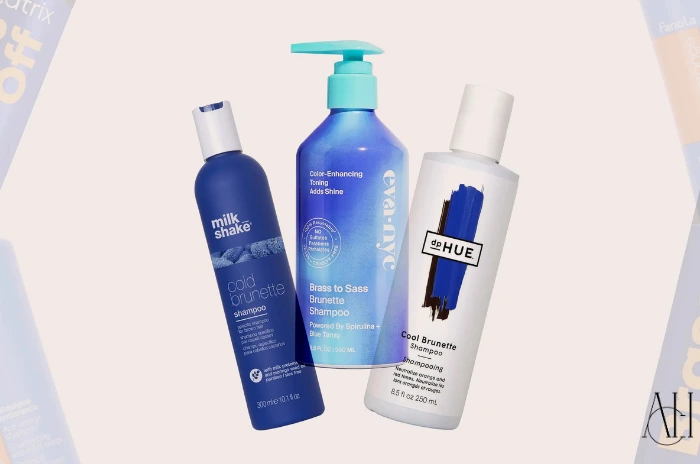
Tips to Avoid Color Mishaps
Preventing common blue hair color problems requires awareness of potential issues and proactive protective measures.
Expect Stains on Fabric and Skin
- Prevent dye transfer by using old towels, pillowcases, and clothing during the first week
- Darker blue shades are more likely to transfer than lighter, pastel blue hair tones
- Salon dye cleanup techniques can be applied at home to minimize staining risks
Dry Hair Thoroughly Before Sleeping
- Wet hair increases the likelihood of prevent pillow stains and color transfer
- Dry hair thoroughly before sleeping to minimize color bleeding onto bedding
- Use a blow dryer on cool setting or allow extra air-drying time before bed
Creative Blue Hair Trend Ideas
Exploring different blue hair color trends allows for personalized expression while maintaining the core blue aesthetic.
Bright Streaks and Ombre Styles
- Blue hair streaks offer a less commitment-heavy way to incorporate blue into your look
- Blue ombre hair creates beautiful color transitions from natural to blue tones
- These techniques can be combined with other colors for unique, personalized results
Mix Shades for Mermaid or Oil‑Slick Hair
- Oil slick hair incorporates blues with purples and greens for an iridescent, multidimensional effect
- Mermaid-inspired looks combine various blue tones from deep navy to bright turquoise
- Mix blue with other colors to create unique, custom color combinations
Styling Blue Hair
Blue hair color opens up new styling possibilities and considerations for maintaining color while creating beautiful looks.
Heat styling without fading color
- Use heat protectants specifically formulated for colored hair before any thermal styling
- Keep styling tools at moderate temperatures to prevent color-stripping heat damage
- Professional hair care styling products often provide better color protection than drugstore alternatives
Best hairstyles to show off blue
- Layered cuts create movement that showcases color dimension and depth
- Braided styles can highlight blue hair streaks or ombre effects beautifully
- Updos can strategically display blue sections while protecting color from environmental damage
Accessories that complement blue hair
- Silver and white accessories enhance cool-toned blue shades perfectly
- Metallic accents can echo metallic blue hair colors for cohesive styling
- Color-coordinated accessories can either complement or provide striking contrast to blue tones
When to See a Professional
Recognizing when professional hair care intervention is necessary prevents damage and ensures optimal color results.
Signs you need a color correction
- Uneven color distribution or patchy fading indicates need for professional correction
- Unwanted green or muddy tones require expert color theory knowledge to fix properly
- Professional blue dye correction can salvage problematic home coloring attempts
Removing blue dye safely
- Removing blue hair dye requires professional techniques to prevent excessive damage
- Color removal processes can be harsh and should be performed by experienced colorists
- Multiple sessions may be necessary for complete color removal from highly pigmented blues
Transitioning to other colors
- Moving from blue to other colors often requires intermediate steps and professional planning
- Blue hair for dark hair transitions may need color filling before applying new shades
- Professional consultation ensures smooth color transitions without unwanted results
How to Apply the Blue Hair Dye
Proper apply blue dye technique ensures even color distribution and optimal results whether working at home or in a salon setting.
Start with Dry, Sectioned Hair
- Section hair dye application ensures thorough coverage and prevents missed areas
- Work with completely dry hair for best color uptake and even distribution
- Use clips to separate hair into manageable sections for systematic application
Massage in Dye and Wait 30–60 Minutes
- Massage dye thoroughly through each section to ensure complete saturation
- Wait time blue dye varies based on desired intensity and hair porosity levels
- Monitor processing carefully to achieve desired color depth without over-processing
Rinse with Cool Water Until Clear
- Cool water helps seal the hair cuticle and lock in color molecules
- Continue rinsing until water runs completely clear to remove all excess dye
- Follow with color-safe conditioner to restore moisture and maintain color vibrancy
FAQ for Blue Hair Color Guide: How to Dye and Maintain Vibrant Results
Do I need to bleach my hair before dyeing it blue?
Yes, most blue hair color requires bleaching to achieve a light enough base for vibrant results, especially on dark hair.
How long does blue hair dye typically last before fading?
Blue hair color typically maintains peak vibrancy for 4-8 weeks, with gradual fading beginning around week 3.
Why does blue hair turn green as it fades?
Blue turns green when the blue pigment fades and underlying yellow tones become visible, creating a muddy green appearance.
What steps can I take to prevent my blue hair from fading quickly?
Use sulfate-free shampoo, minimize washing frequency, avoid hot water, and apply UV protection blue hair products daily.
Is it better to dye my hair blue at home or go to a professional salon?
Professional blue dye application typically provides better, more even results with less risk of damage or color mistakes.
What are the essential aftercare tips for freshly dyed blue hair?
Wait 48 hours before washing, use color-safe conditioner, avoid heat styling, and protect from sun exposure.
What should I do if my blue hair starts to turn an undesirable shade like green or teal?
Use purple-toned products to neutralize yellow undertones or schedule a professional hair care color correction appointment.
Will dyeing my hair blue cause significant damage?
The bleaching process required for vibrant blue dye can cause damage, but proper blue hair aftercare minimizes long-term effects.

